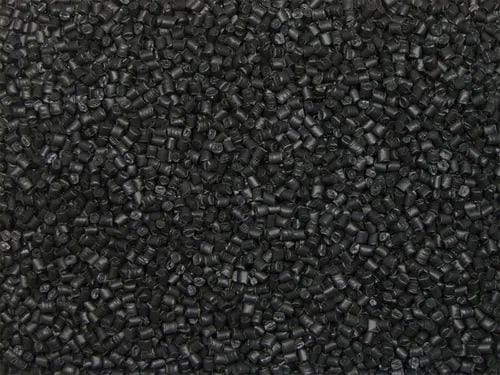LLDPE compound refers to a type of plastic material created by blending linear low-density polyethylene (LLDPE) resin with various additives to enhance its properties. LLDPE is a thermoplastic polymer that can be melted and molded into different shapes. It is known for its balance of flexibility and strength, making it a versatile material for various applications. However, LLDPE on its own may only sometimes meet the specific requirements of an end product. By compounding LLDPE with additives, manufacturers can achieve a broader range of properties, such as improved strength, increased flexibility, enhanced weather resistance, better processability, and even fire retardancy.
Need help selecting the perfect LLDPE compound for packaging films, automotive parts, or construction geomembranes? Reach out to our experts today to tailor your formulation with additives like impact modifiers, UV stabilizers, or flame retardants, delivering superior strength, flexibility, and processability for your specific needs.

Composition and Structure
Linear Low-Density Polyethylene (LLDPE) Is A Type Of Polyethylene Plastic Produced By Copolymerizing Ethylene With Small Amounts Of Alpha-Olefins Like Butene, Hexene, Or Octene Using Ziegler-Natta Or Metallocene Catalysts. Its Structure Is Similar To Low-Density Polyethylene (LDPE) But With Shorter And Fewer Branched Chains, Giving It Higher Strength And Toughness. The Chemical Structure Of LLDPE Consists Of A Linear Backbone Chain Of Carbon Atoms With Short Branched Chains Of Different Lengths. The Degree Of Branching And Branch Length Distribution Can Be Controlled During Polymerization To Tailor The Properties Of The Final LLDPE Compound.
Compared to HDPE, LLDPE Has A Lower Density And Crystallinity, Resulting In Improved Flexibility And Impact Resistance. In Contrast To LDPE, LLDPE exhibits higher tensile strength and better environmental stress crack resistance.
Properties and Advantages
LLDPE compound offers a range of beneficial properties:
- Mechanical properties: LLDPE’s high tensile strength, excellent elongation at break, and good tear resistance make it suitable for applications requiring durability and flexibility.
- Thermal properties: LLDPE exhibits good heat resistance and maintains its properties over a wide temperature range, making it suitable for various processing techniques and end-use applications.
- Chemical resistance: The material is excellently resistant to many chemicals, acids, and solvents, enhancing its suitability for packaging and industrial applications.
- Processing advantages: LLDPE compound offers good melt strength and processability, allowing for efficient manufacturing using various techniques such as blown film extrusion, injection molding, and rotational molding.
LLDPE Compounds Additives
Common additives include:
- Antioxidants: to improve the material’s resistance to degradation caused by heat and sunlight.
- UV stabilizers: to further protect the material from sun damage.
- Slip and anti-block agents: to improve the processing characteristics of the material during manufacturing.
- Pigments and dyes: to add color to the compound.
- Flame retardants: to enhance the material’s fire resistance.
- Impact modifiers: to improve the material’s toughness and resistance to cracking.
LLDPE Compounds Applications
LLDPE compounds are widely used in various industries, including packaging (films, bags, containers), automotive (interior and exterior parts), construction (pipes, geomembranes), and consumer goods.
Manufacturing Process
The production of LLDPE compound involves several steps:
- Raw materials: The primary raw material is ethylene, derived from natural gas or petroleum. Alpha-olefin comonomers are also used to introduce short-chain branching.
- Polymerization techniques: LLDPE is typically produced using gas-phase, solution, or slurry polymerization processes. The choice of polymerization method affects the compound’s final properties.
- Compounding methods: The base resin is compounded with additives to enhance specific properties after polymerization. This process may include the addition of stabilizers, antioxidants, processing aids, and other functional additives.
Conclusion
The specific formulation of an LLDPE compound depends on the desired properties and end-use requirements, with different additives and concentrations used to achieve the target performance characteristics.

